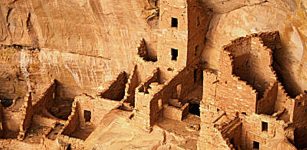Battle Of Himera: New Study That Contradicts Historical Accounts
Conny Waters - AncientPages.com - Archaeological human remains from the Battles of Himera provide unique opportunities to test early written history.
The study contradicts certain claims made in historical accounts by ancient Greek writers because researchers tested these historical claims against geochemical evidence.
Location of the main Phoenician (blue color) and Greek (red color) cities. source
In a new study, Katherine Reinberger of the University of Georgia, US, and colleagues reveal that armies in the Battles of Himera, which was one of the most important battles of the Sicilian Wars (580–265 BC) were a mixture of locals and outsiders.
They sampled strontium and oxygen isotopes from the tooth enamel of 62 soldiers who fought in the battles. The soldiers' tooth chemistry varied based on their region of origin.
In 480 BC, the ancient Greek city of Himera successfully fought off a Carthaginian army. In 409 BC, Carthage attacked again, and Himera fell. Historians of the time, including Herodotus and Diodorus Siculus, write that Himera stood strong in the first battle thanks to the aid of Greek allies, while it went unaided in the second battle. However, given the limited and partisan perspective of those ancient historians, these accounts are liable to be incomplete and biased.
The researchers found that only about one-third of Himera's soldiers from the first battle were local to the area, while around three-fourths were locals in the second battle, corroborating the written claims that Himera was more aided by outsiders the first time than in the second battle. However, the evidence also shows that, contrary to written accounts, many outsiders were not Greek allies, but were instead mercenaries hired from beyond Greek territories.
This study demonstrates the power of archaeological remains to test the claims of historical texts and reveals a potential bias in ancient writings. Ancient Greek historians might have intentionally downplayed the role of foreign mercenaries in the Battles of Himera in an attempt to maintain a more Greek-centric narrative and to avoid the subject, potentially distasteful to Greek society, of hiring foreign mercenaries.
See also: More Archaeology News
"Here we were able to use isotopes to support ancient historians, while also challenging those sources by finding evidence of mercenaries and potentially foreign soldiers from very diverse geographic origins. This study is also important to future studies of migration in the Mediterranean by expanding the network of comparative isotopic values," according to the authors.
Written by Conny Waters - AncientPages.com Staff Writer





















